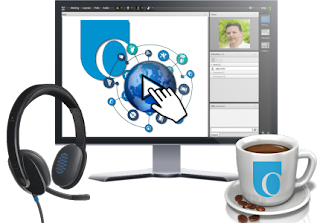Hi, friends, colleagues, and followers (especially science fiction fans)!
This post is a bit of a departure from my usual educational technology fare. I recently had an opportunity to hear a story about a colleague’s daughter, who was selling her book of poetry in support of Cystic Fibrosis research in honor of a close friend who had suffered from the condition (see The 65 Roses Story). That story gave me a bout of inspiration.
Twenty years ago, I wrote and self-published a science fiction novel called The Caster. I’d almost forgotten about that project… but I’ve been inspired to resurrect it for a worthy cause. As many of my friends and colleagues are aware, in November 2014, my son Alex was diagnosed with Duchenne Muscular Dystrophy. Duchenne is a (currently) incurable degenerative neuromuscular disorder. My family and I are now big supporters of the work done by Muscular Dystrophy Canada, and I thought – why not resurrect The Caster as an eBook. So, here it is. I’ve polished up the file formatting so that the eBook functions properly, and I’m selling it through the Lulu.com independent publishing platform. I’ll be donating all proceeds to help the family support and research work funded by Muscular Dystrophy Canada.
The Caster always had a special little place in my heart as a labour of love when I first wrote and published it. Now, perhaps I can make it just a little more special by using this project from my youth to help create a brighter future for Alex (and all boys and their families living with Duchenne)!
The Caster is available in ePub format for just $10 (CAD) at http://tinyurl.com/casting4md
Secrets,
Hatred,
Absolute Power,
Absolute Terror...
It can happen here...
The year is 2042. A thirteen year-old girl with as-of-yet undiscovered magical powers witnesses a brutal attack upon one of Hibernia State University's most prominent psychic-magic scientists--her mother.
In order to discover the truth about the near fatal assault, Meghan Fitzgerald must embrace her unwanted powers and discover the true identity of the caster responsible for her mother's fate--Myrlin.
But the secret of Myrlin's identity could mean more than just saving her mother's dishonored name. It could be the key to saving Avalon City from an even more dangerous villain, and a plot more diabolical than anyone could have ever dreamed.
All that Meghan Fitzgerald has to do to save the world she knows is the one thing she has sworn never to do--use her magical powers as a weapon.
Preview The Caster
Buy it at Lulu.com
(all proceeds donated to Muscular Dystrophy Canada)
The ePub format eBook will work on most eBook reading devices, and can be imported into most reader applications. If you need an free eBook reader for your desktop, try Calibre!
This post is a bit of a departure from my usual educational technology fare. I recently had an opportunity to hear a story about a colleague’s daughter, who was selling her book of poetry in support of Cystic Fibrosis research in honor of a close friend who had suffered from the condition (see The 65 Roses Story). That story gave me a bout of inspiration.
Twenty years ago, I wrote and self-published a science fiction novel called The Caster. I’d almost forgotten about that project… but I’ve been inspired to resurrect it for a worthy cause. As many of my friends and colleagues are aware, in November 2014, my son Alex was diagnosed with Duchenne Muscular Dystrophy. Duchenne is a (currently) incurable degenerative neuromuscular disorder. My family and I are now big supporters of the work done by Muscular Dystrophy Canada, and I thought – why not resurrect The Caster as an eBook. So, here it is. I’ve polished up the file formatting so that the eBook functions properly, and I’m selling it through the Lulu.com independent publishing platform. I’ll be donating all proceeds to help the family support and research work funded by Muscular Dystrophy Canada.
The Caster always had a special little place in my heart as a labour of love when I first wrote and published it. Now, perhaps I can make it just a little more special by using this project from my youth to help create a brighter future for Alex (and all boys and their families living with Duchenne)!
The Caster is available in ePub format for just $10 (CAD) at http://tinyurl.com/casting4md
About The Caster
Secrets,Hatred,
Absolute Power,
Absolute Terror...
It can happen here...
The year is 2042. A thirteen year-old girl with as-of-yet undiscovered magical powers witnesses a brutal attack upon one of Hibernia State University's most prominent psychic-magic scientists--her mother.
In order to discover the truth about the near fatal assault, Meghan Fitzgerald must embrace her unwanted powers and discover the true identity of the caster responsible for her mother's fate--Myrlin.
But the secret of Myrlin's identity could mean more than just saving her mother's dishonored name. It could be the key to saving Avalon City from an even more dangerous villain, and a plot more diabolical than anyone could have ever dreamed.
All that Meghan Fitzgerald has to do to save the world she knows is the one thing she has sworn never to do--use her magical powers as a weapon.
Preview The Caster
Buy it at Lulu.com
(all proceeds donated to Muscular Dystrophy Canada)
The ePub format eBook will work on most eBook reading devices, and can be imported into most reader applications. If you need an free eBook reader for your desktop, try Calibre!









